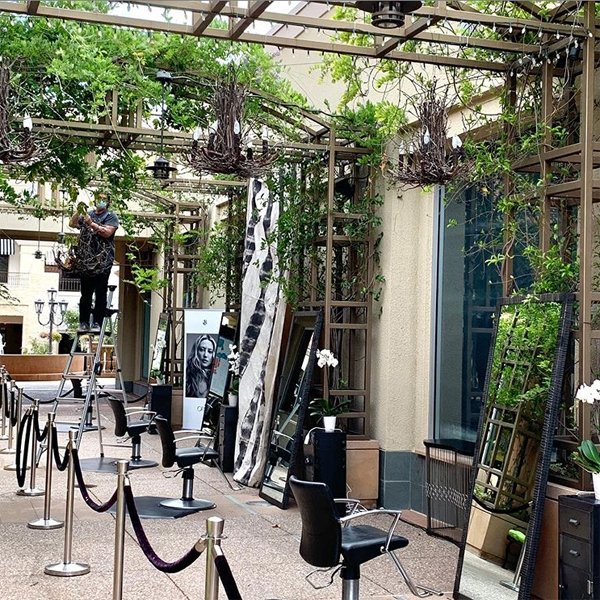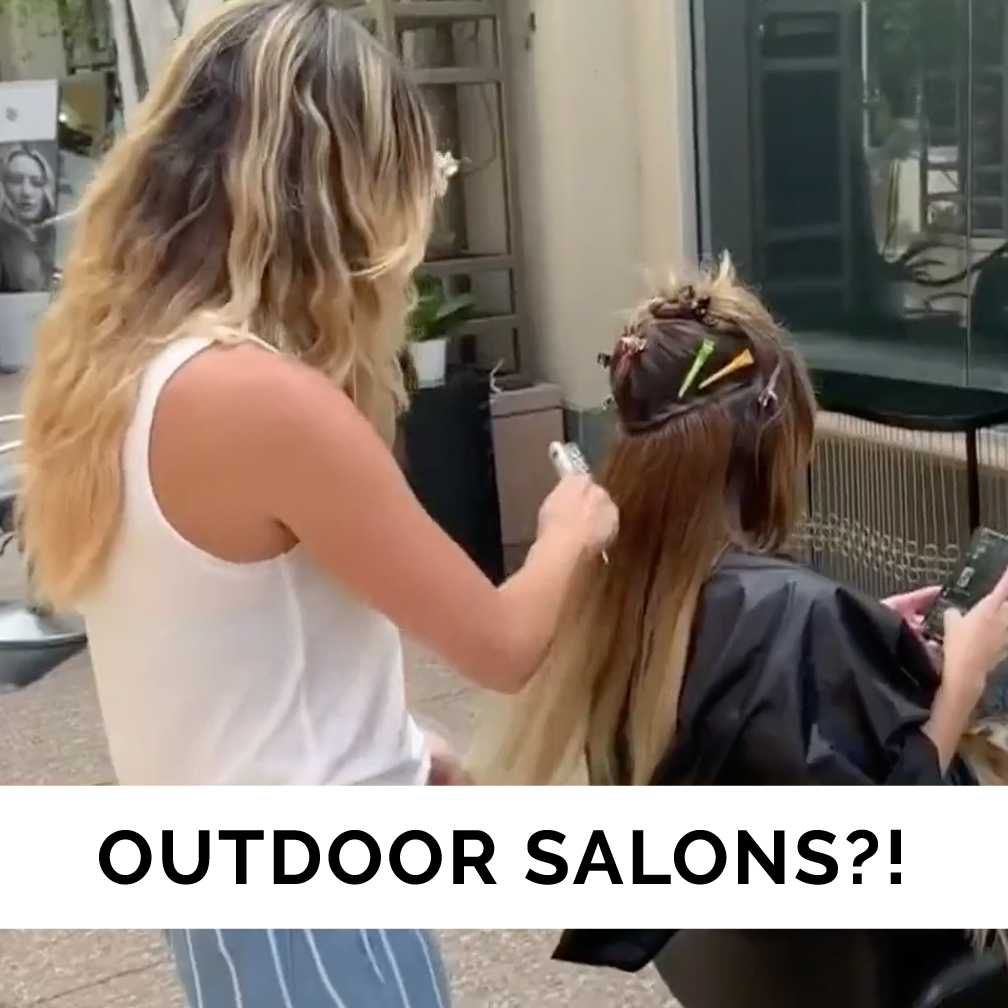How A California Salon Is Moving Services Outside, Under Strict Rules
The Reality Of Moving Salon Services Outside
“A lot of fear, a lot of anger, so much confusion.” That’s how Tribez Salon owner Donna Bruner describes the past four months as a business owner in Danville, Calif., a suburb of San Francisco. After a three-month shutdown, Donna thought her two salon locations could reopen again to recoup some of her losses, until the state announced another salon shutdown, then gave salons the choice to open back up—as long as they worked outside.
Salons and barbershops in the state are trying to make their businesses work with the rules they’ve been handed, but the practicalities of operating outside legally—such as only doing haircuts, as chemical services and shampooing are prohibited by the California State Board of Barbering & Cosmetology—are not sustainable. However, Donna was able to set up an outdoor salon at one of her locations. BTC talked to her about how she’s guiding her business through this tumultuous time.
Zero Business Revenue For Three Months
The three-month shutdown forces hairdressers to stay home, leading some to seek new careers, collect unemployment and take on childcare responsibilities.
About 75 stylists rent chairs at Donna’s two salon locations, plus estheticians, nail technicians and other employees. She complied with state mandates and shut down her salon for three months in the initial stages of the COVID-19 outbreak in the U.S. That first shutdown period was scary, as stylists and salon owners across the country have experienced.
“We had a huge loss of business,” said Donna, who has owned Tribez for 15 years. Some stylists who rented from her have now taken a year off of doing hair in order to stay home with their children, since going back to school is probably out of the question. Others were newer to the industry and decided to stop being a stylist and go back to school for other career paths. Figuring out a way to make it through the first California shutdown was incredibly difficult.
“It’s horrific to have this on your shoulders. The burden and responsibility of all your work family being out of work and having a personal relationship with them, knowing that one stylist is a single parent, not getting child support, has three children, not getting unemployment…you learn the personal stories of your staff and that flashes before you,” she said. “What’s going to happen to your business you’ve put your heart and soul into for so many years? This could put all of us under. Our landlords still want the rent.”
A Brief Reopening—Less Than Three Weeks
California salons reopen with strict capacity restrictions, fear of the virus, full books and no option to double-book.
When the state announced salons in some counties could reopen, Donna and her team got to work. She hunted far and wide for acrylic, which had become scarce, to use as dividers between stations and shampoo bowls. She was pleased that their initial reopening was successful—but that didn’t last long.
“We were very busy at first, because some of the surrounding counties had still not opened back up,” she said. “Haircuts, color, extensions, many color corrections…but it was more challenging because of contact and space issues. We couldn’t double- or triple-book.”
Initially, a couple stylists were hesitant to return to work. Some were nervous about contracting the virus. Another couldn’t find childcare and had no choice but to stay home. Donna even raised some salaries because employees were making more on unemployment with the additional $600 per week from the federal government. But almost all stylists did return to work, and were ready to get back to business.
Salons Shut Down Again, Unless They Operate Outside
After backlash from the second shutdown, California allows salons to operate outside—but only dry haircuts and styling are allowed.
Tribez salons were open for about 2.5 weeks before more devastating news. On July 13, California Gov. Gavin Newsom announced another shutdown of indoor businesses in counties on the state’s COVID-19 “watchlist.” The state said businesses could continue to operate outside, if they could do so safely. However, the California State Board quickly responded that salons and barbershops could not operate outside and would risk losing their licenses if they did so.
Stylists and shop owners in the state were outraged, and called for the ability to move operations outside. A few days later, the State Board and Gov. Newsom announced salons actually could operate outside, with strict limitations. No color or chemical services would be permitted, and no shampooing outdoors, effectively reducing service offerings to haircuts and styling.
“Are you kidding?” Donna said about the new outdoor rules. “Our environments are so safe, even safer than they ever were before because of all the protocols we have in place. It’s been as high as 100° here, so how are we going to do this?”
About 90 percent of Tribez salons services are color or chemical, leaving only a small percentage of business to move outside. “We’ve had very little interest from staff to come back because they just don’t see how this is going to work,” Donna said.

How An Outdoor Salon Space Actually Works
What to expect when salons move outdoors—setting up the space, offering limited services and dealing with new work conditions.
To give Tribez stylists the option to work, Donna and the staff at one of the salon locations decided to figure out an outdoor salon space. “We were fortunate, we had an ideal situation and opportunity to do that,” she said. The property manager of the shopping plaza where the salon is located was up for allowing the salon to do what they needed to do, so the team pulled the mirrors off the walls and set them up outside. There are even hanging chandeliers outdoors. The salon is asking clients to wash their hair at home and come with their hair wrapped in a towel.
So how’s it actually working out? Donna said some stylists were booked back-to-back. “They’re touched that we have gone above and beyond to give them that choice. It gives them hope,” she said. Others are simply not going to work outside.
“I think that if nothing is available, we feel better if we have something. And if that means a haircut, it’s better than nothing,” Donna said. “But not that many stylists want to work in these conditions. Why would they choose to be outside, where it’s hot, their clients are hot, they can’t shampoo? The government may have thought it was a big deal to offer that up as a solution, but I don’t know any other hair salon in my geographical area that took hold of that opportunity.”
So how long will Tribez continue to have an outdoor salon space? Donna isn’t sure.
“Because this is the second time [we’ve closed] and we have no idea, it kind of puts the kibosh on your hope and dreams. We just have no idea. Are we going to go out of business? Are we going to survive this? No one can say, just hang in there for a week, for two weeks,” she said. “In the very beginning, we thought this will just be a week. And it ended up being three months. We do live in fear and yet, as owners and leaders, we have got to pull from deep down inside to be able to encourage, support and be optimistic for our staff. And that’s a hard thing to do.”








